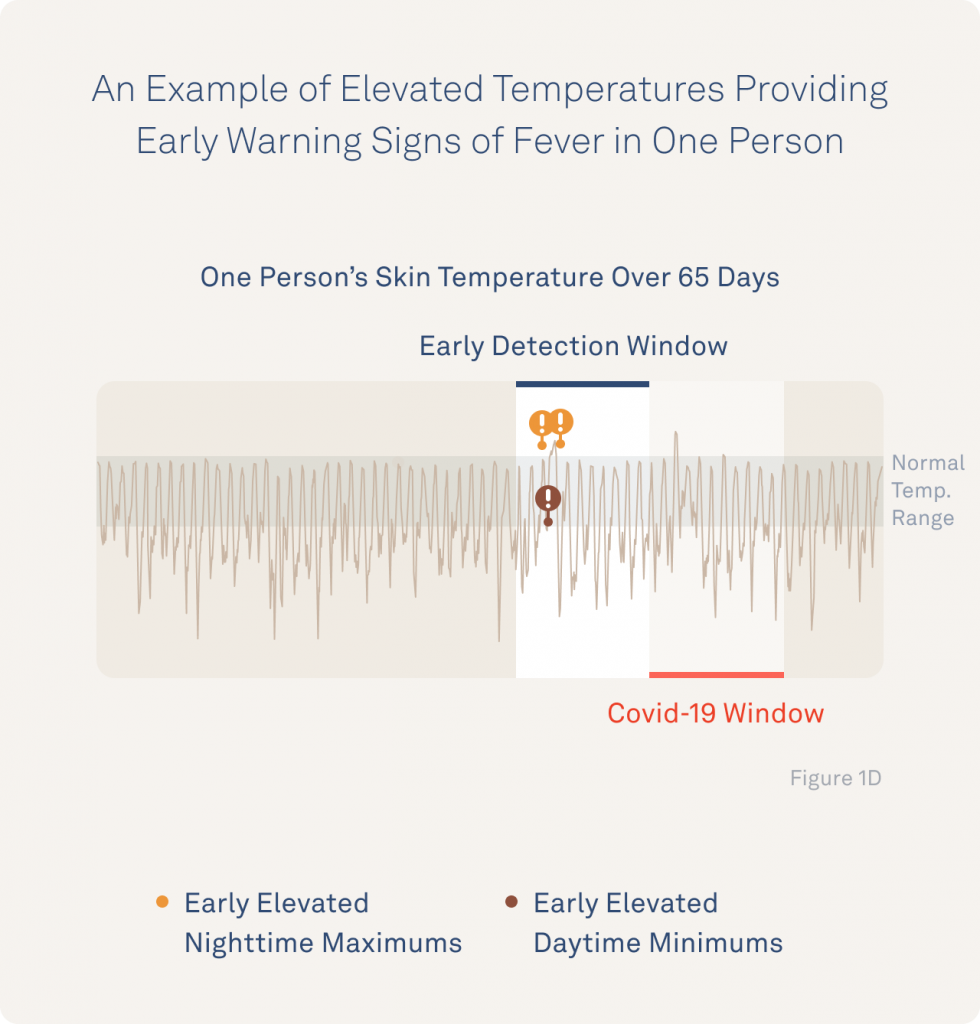- Researchers from UCSF began the TeamPredict Study in March with Oura Ring.
- They aimed to investigate the use of temperature-sensitive rings for predicting the onset of fevers and potentially detect COVID-19.
- They published their results in the journal Scientific Reports.
Remember those mood rings from the 90s? The ones that supposedly changed color according to your mood. Although the crystals in the ring changed color according to the change in body temperature, the result was quite unreliable as body temperature can be affected by multiple factors other than emotions. However, technology has now progressed far beyond color changing mood rings. A Finnish company called Oura has devised a ring that not only monitor’s the body’s temperature, but also heart rate, breathing, and physical activity. Furthermore, the ring can differentiate between elevated body temperatures from exertions and those from infections.
Oura Ring Allows Continuous Monitoring of Body Temperature
With the advent of the pandemic, researchers questioned whether temperature monitoring devices could help detect fevers and potentially prevent the spread of COVID-19. Therefore, a team of researchers at the University of California, San Francisco (UCSF) began the TeamPredict study in March of this year. In collaboration with a Finnish startup, Oura, the researchers aim to develop an algorithm that can predict the characteristic symptoms of COVID-19 such as fever, cough, and fatigue.

With wearable devices that can measure temperature, we can begin to envision a public COVID early alert system.
Benjamin Smarr, study’s corresponding author
Fever, defined as an elevation of body temperature, is a leading symptom of coronavirus infection. Furthermore, it is also an important biomarker of the disease. However, body temperature can vary from person to person and also according to the time of the day.
The study included data from over 65,000 people who wore the rings since March. The wearable sensor allowed for continuous monitoring of the users’ body temperature. Furthermore, because the wearers started wearing the ring before they got sick, this helped establish their baseline temperatures. This helped account for individual differences. The users also filled out a daily symptom survey to help collect information on COVID-19 symptoms and diagnoses.
Fevers Detected in 76% of Users
Recently, the researchers published results based on the first 50 people from their sample who tested positive for COVID-19. They published their findings in the journal Scientific Reports.
38 out of the 50 participants reported elevated body temperatures even before their symptoms started. Furthermore, some asymptomatic individuals showed slightly higher-than-normal temperature patterns throughout their infections. Thus, supporting the hypothesis that some fevers can often go noticed without being truly asymptomatic.
If wearables allow us to detect COVID-19 early, people can begin physical isolation practices and obtain testing so as to reduce the spread of the virus. In this way, an ounce of prevention may be worth even more than a pound of cure.
Ashley Mason, principal investigator of the study.
Researchers state this as a proof-of-concept study and call for the need for further research into wearable sensors and the early detection of illnesses.
Reference:
Smarr, B.L., Aschbacher, K., Fisher, S.M. et al. Feasibility of continuous fever monitoring using wearable devices. Sci Rep 10, 21640 (2020). https://doi.org/10.1038/s41598-020-78355-6




